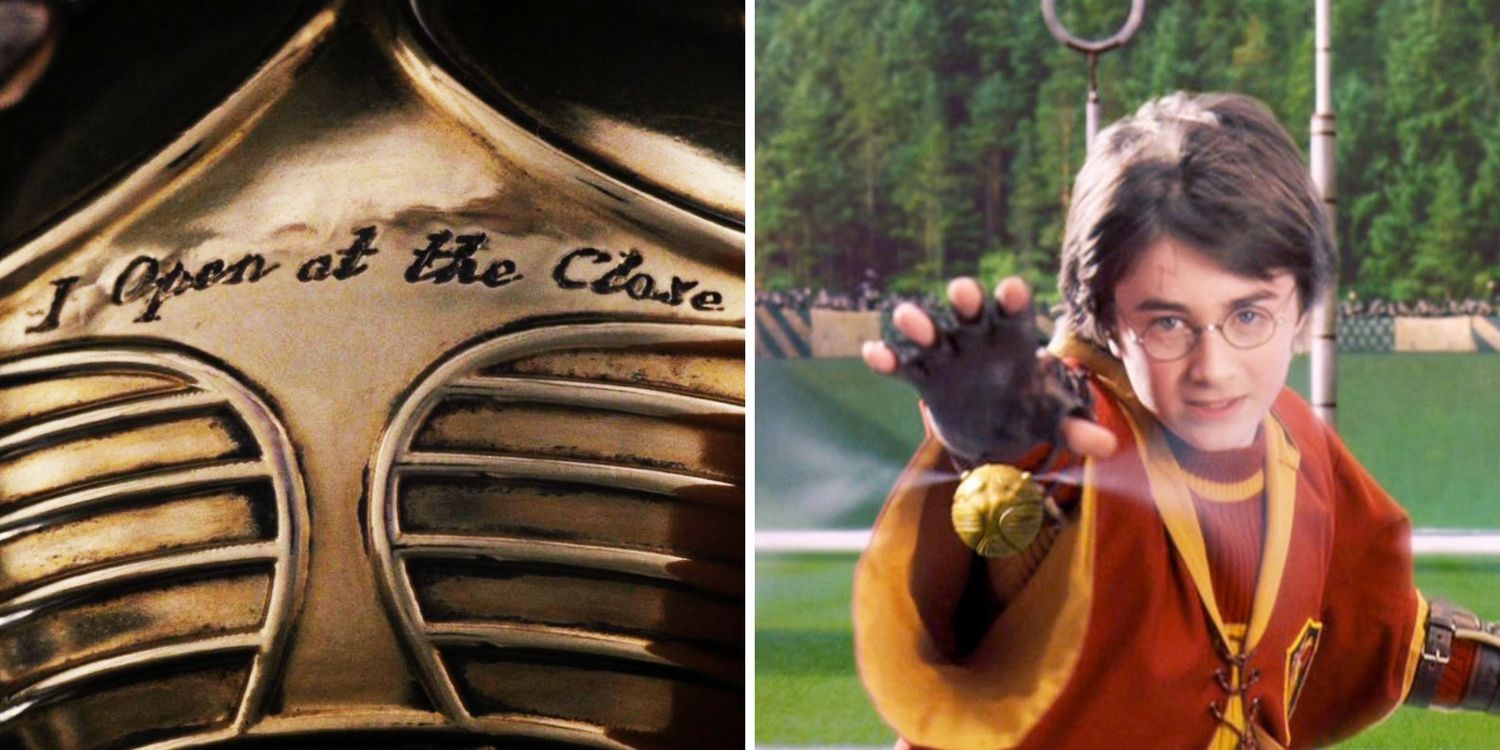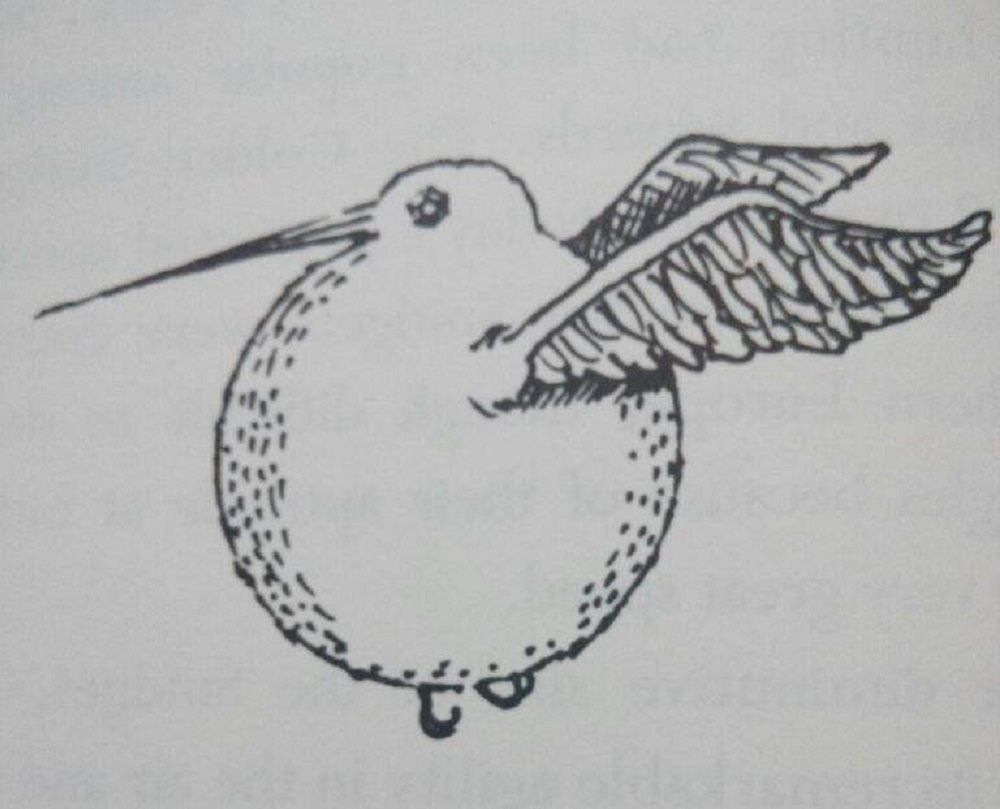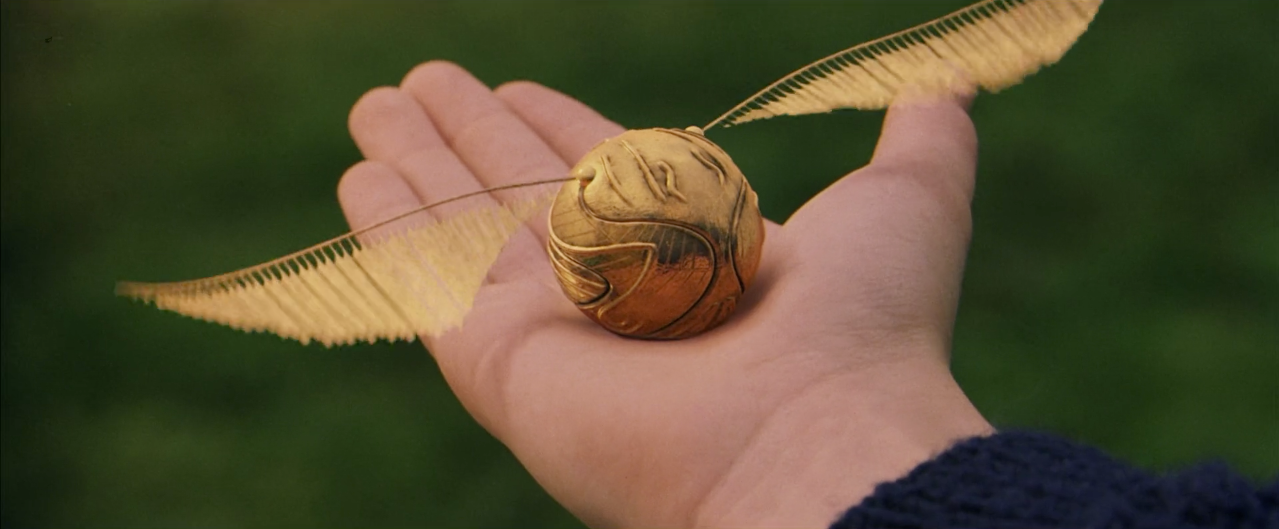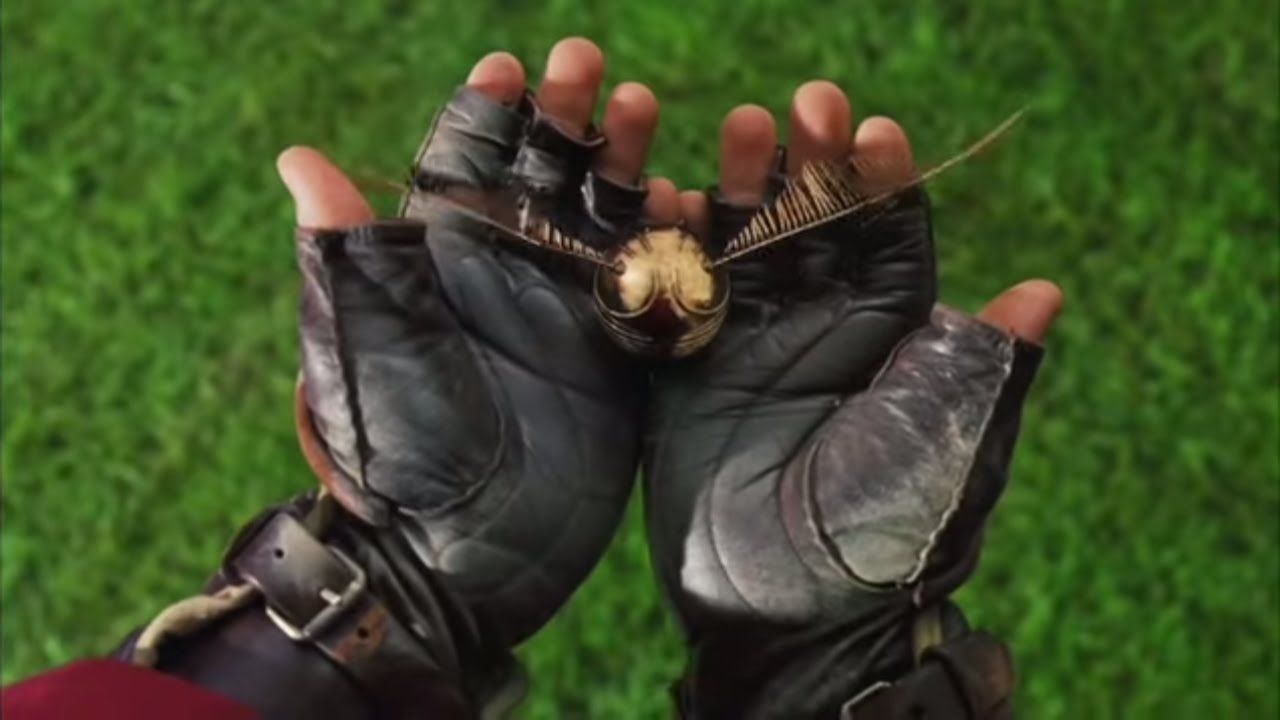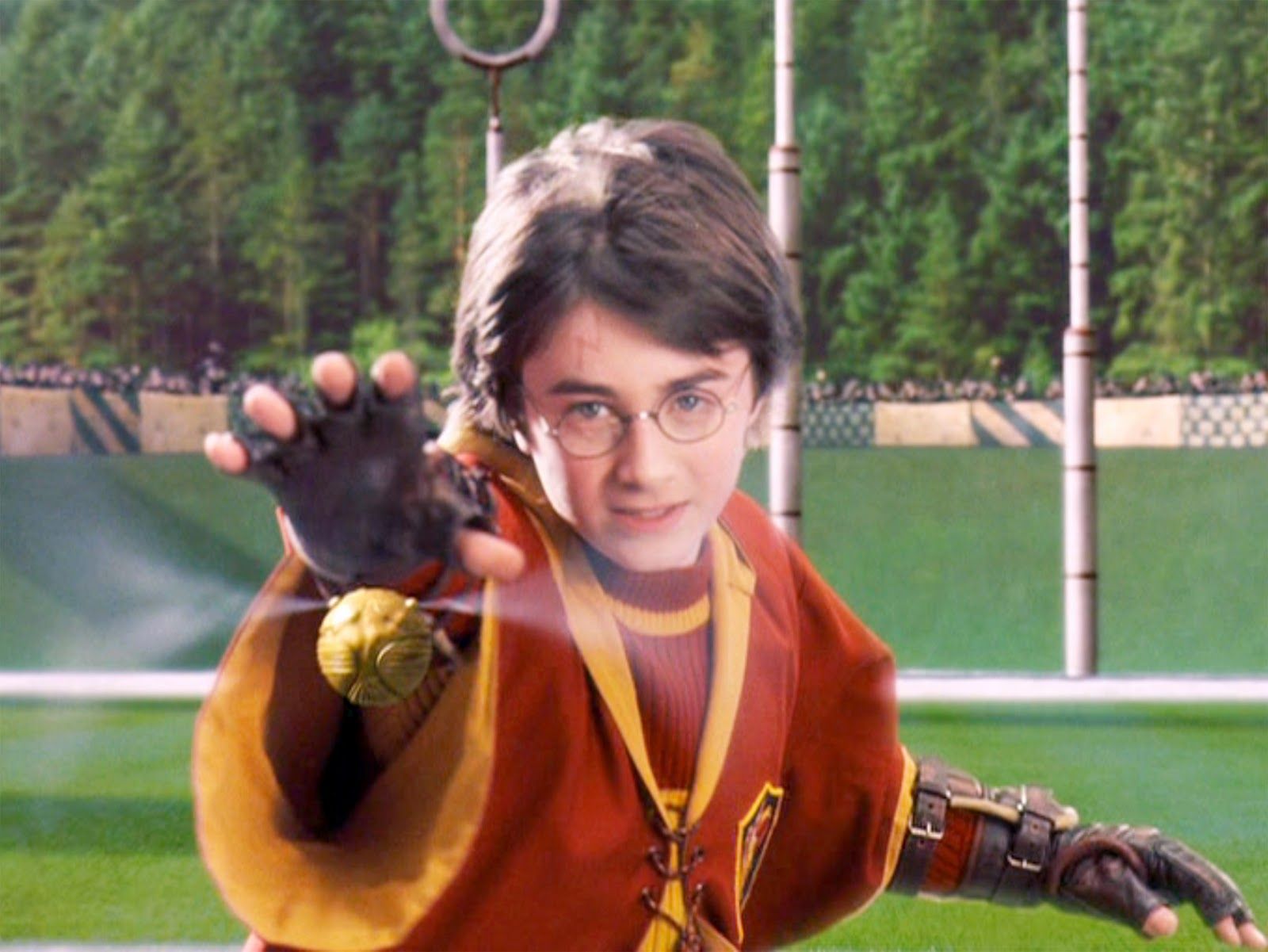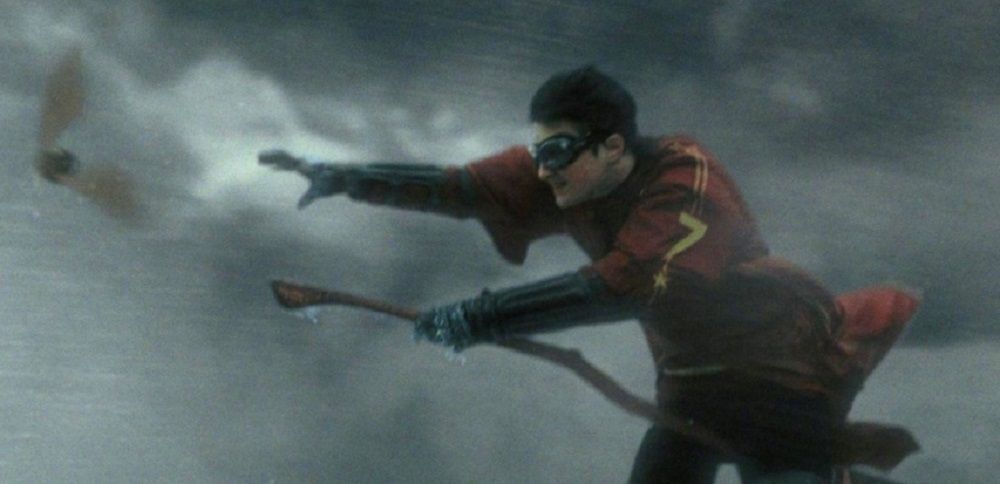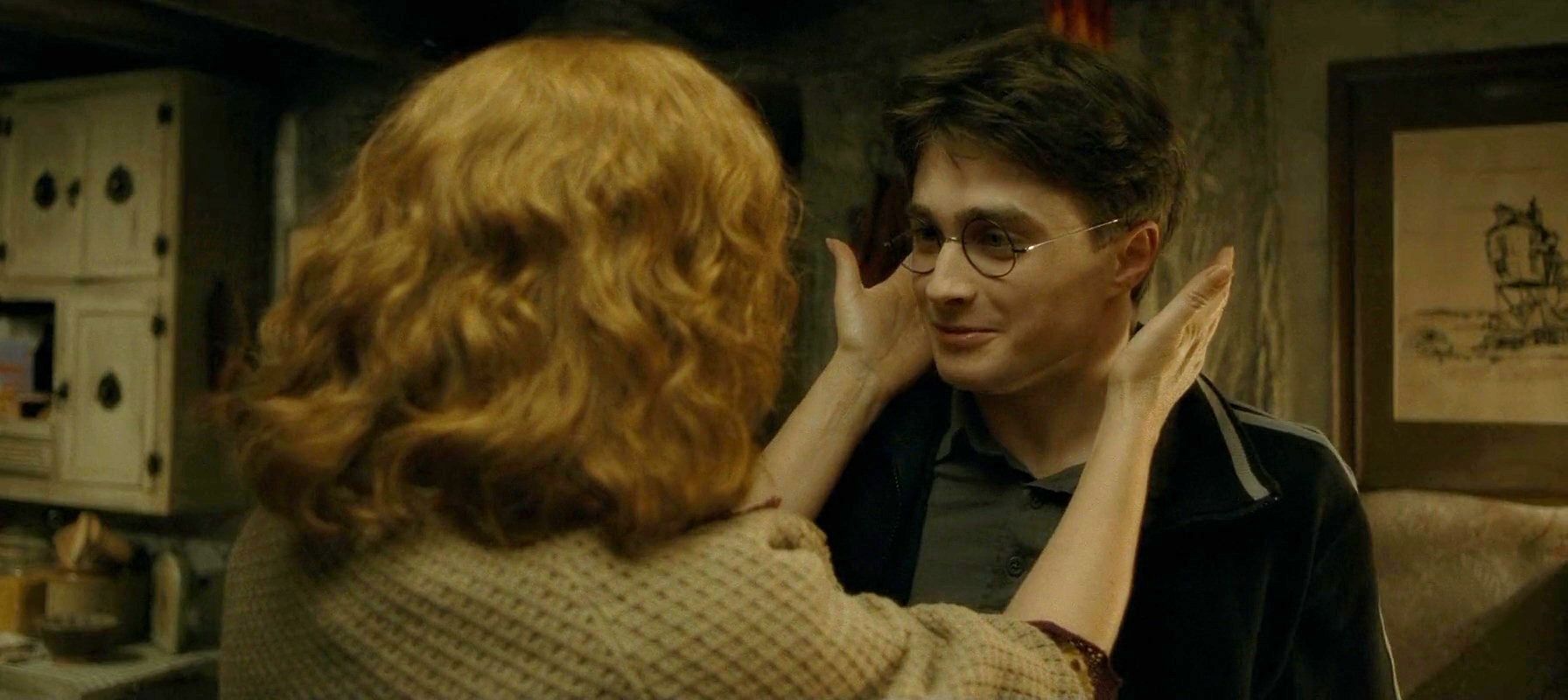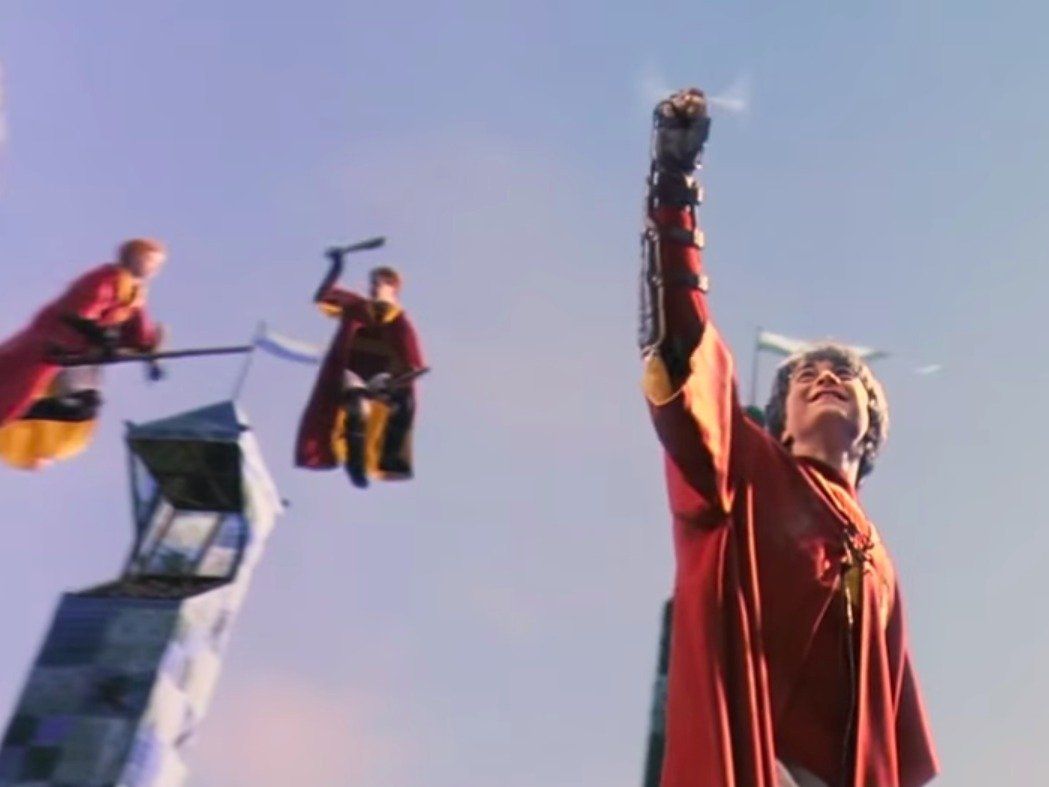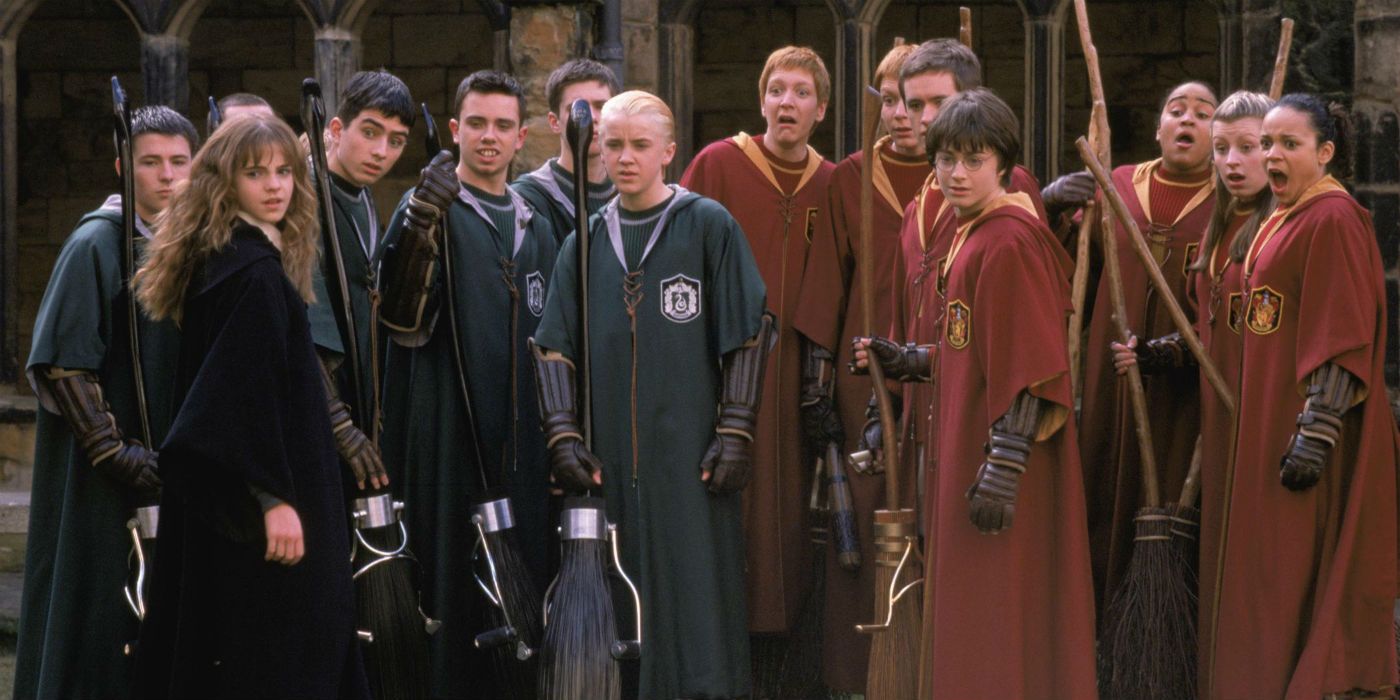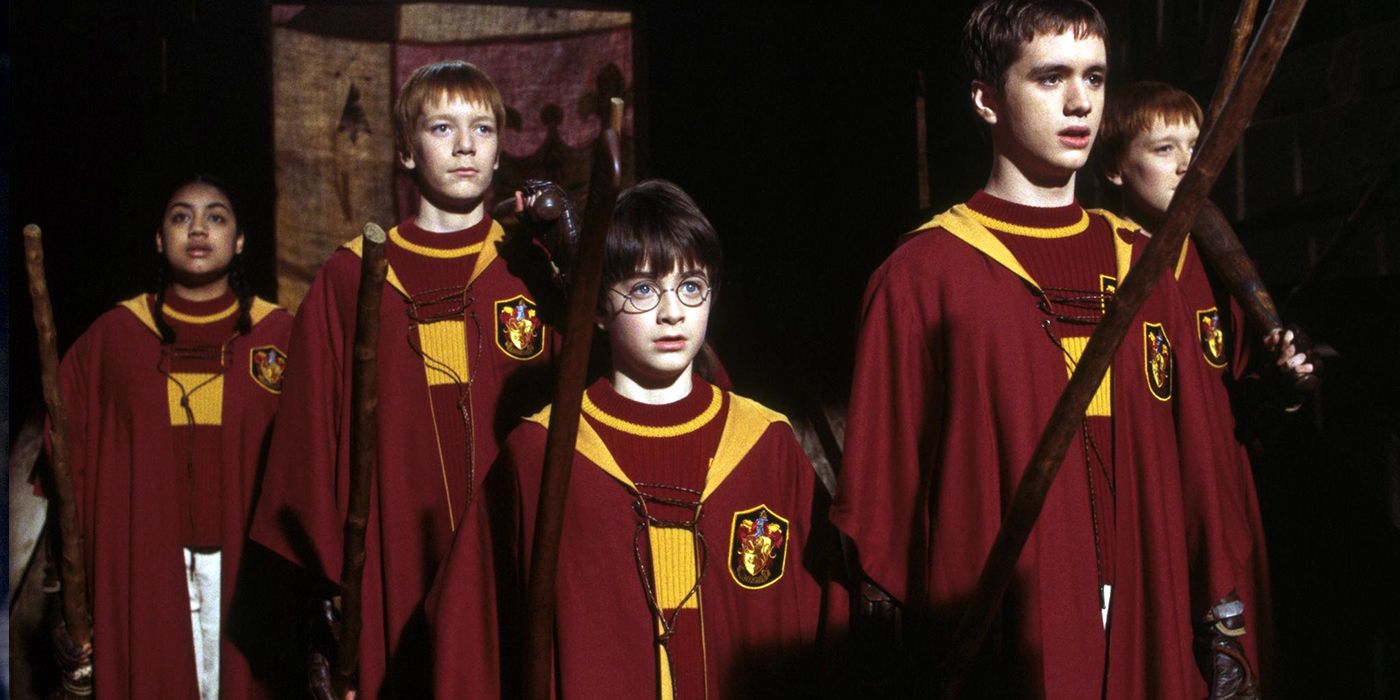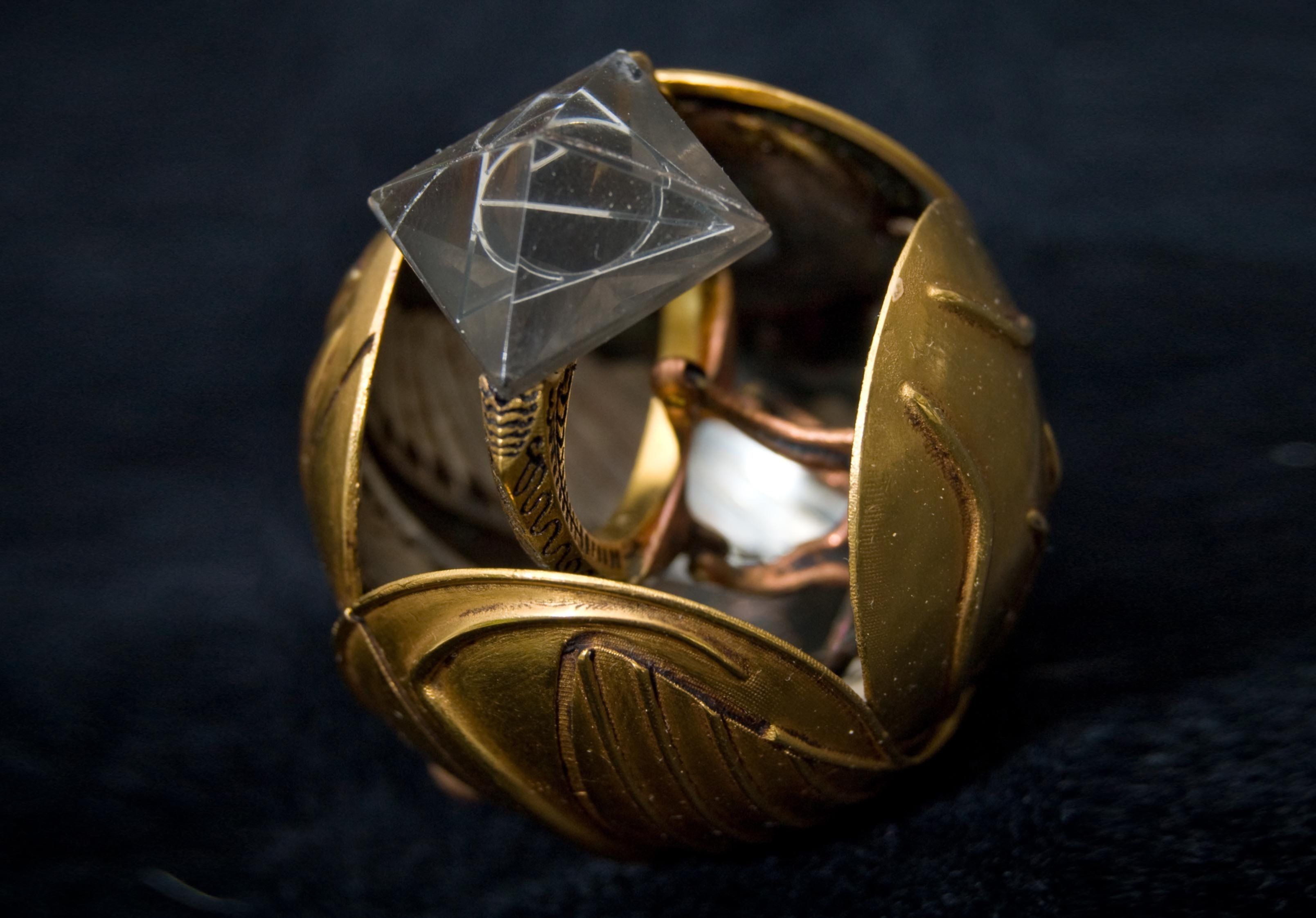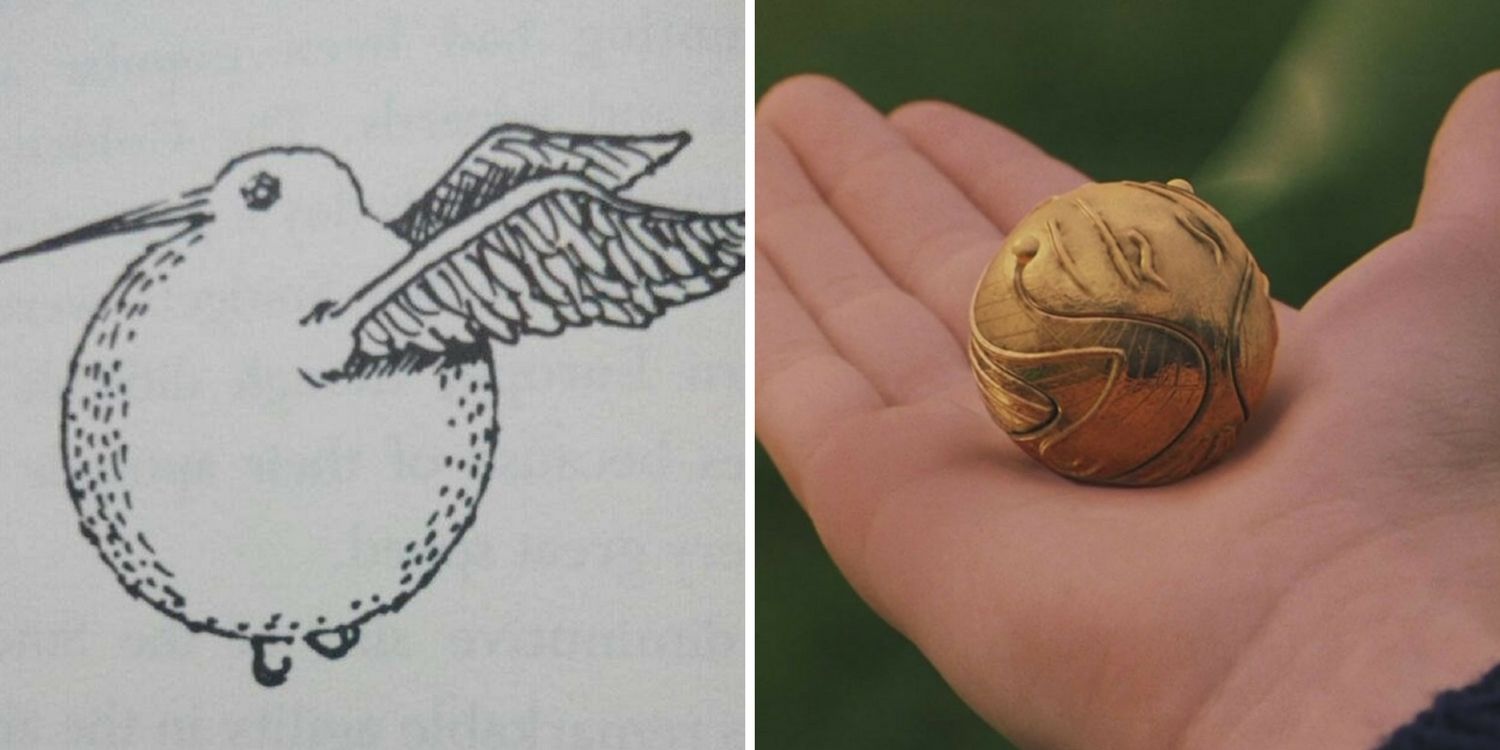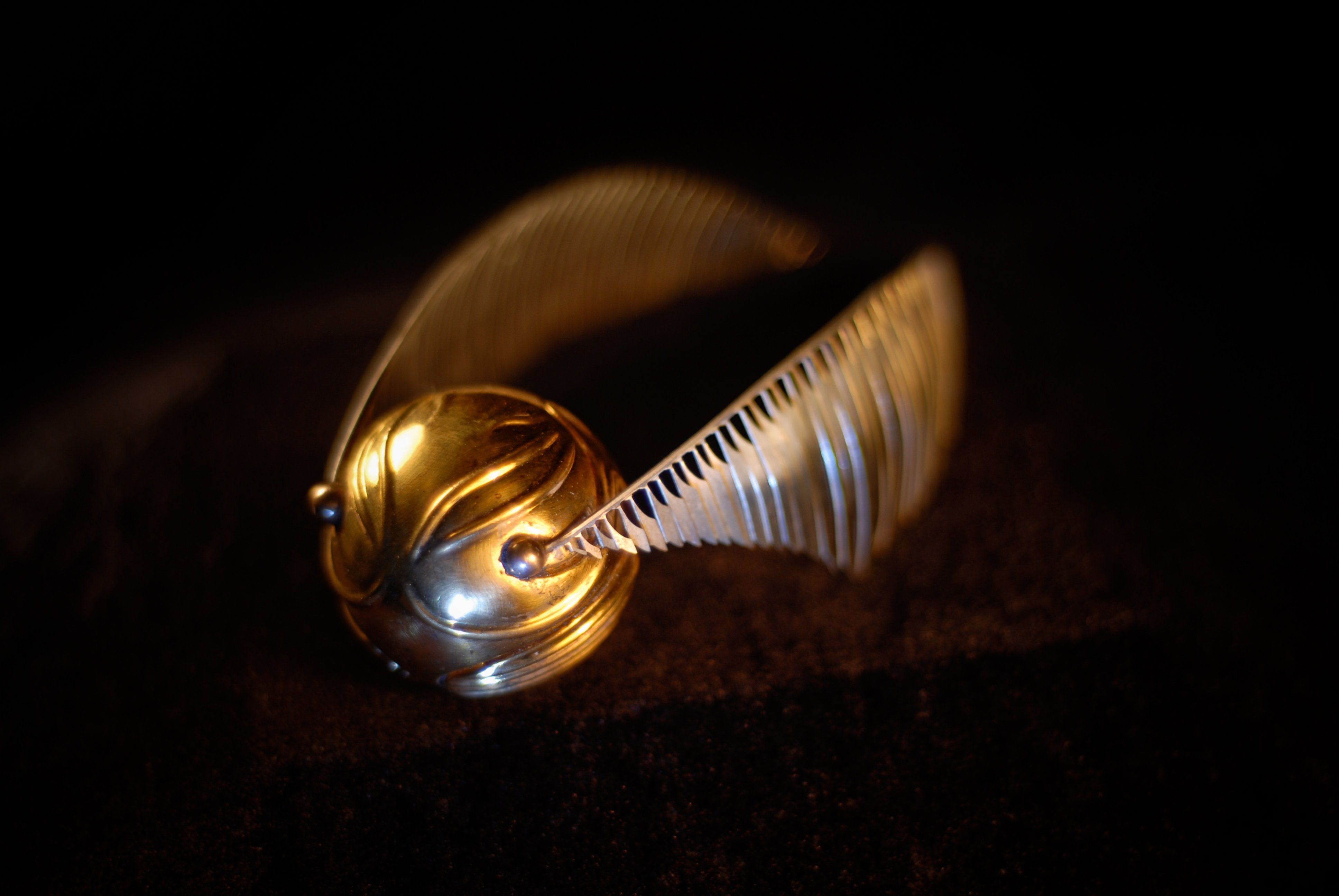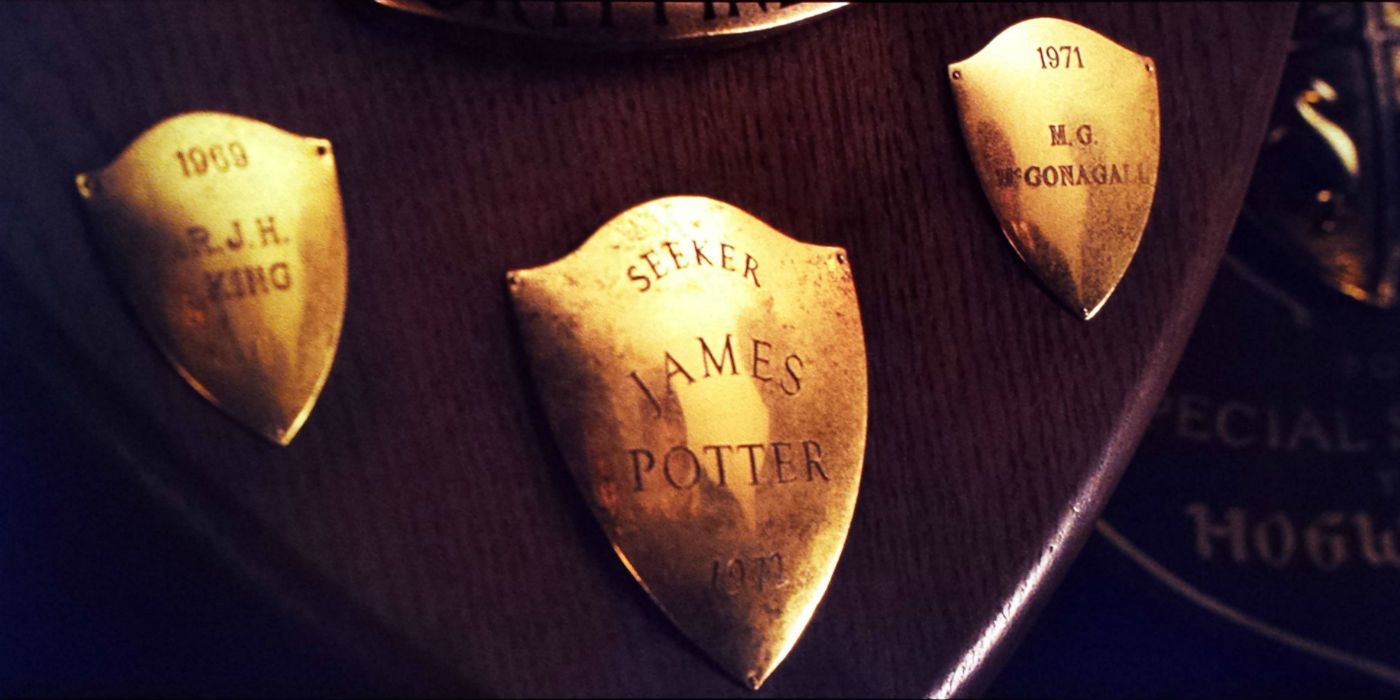While most of us have been impatiently waiting for our Hogwarts letters for quite some time, this year marks the twentieth anniversary celebration of the beloved Harry Potter series. Whether you grew up reading the beloved Harry Potter novels from J.K. Rowling, or you only remember watching the movies, or perhaps both, you’ll undoubtedly remember the Golden Snitch. On the surface, the idea behind the Golden Snitch might seem simple enough to understand, but there’s a surprising amount of other trivia to uncover.
Throughout Harry’s formative years at Hogwarts, most of us might remember the Golden Snitch for being a key aspect of Quidditch. With a golden finish, the Snitch might even be mistaken for a walnut at first glance, but the Quidditch ball also features a pair of fast-twitching wings.
The Golden Snitch is essential to understanding the rules of playing Quidditch. The Seeker on each team must look out for the Golden Snitch, and when caught, the game will come to an end. In extremely rare cases, the captains from both teams can agree to end the game without the Snitch being caught, but one of the teams would have to forfeit their victory.
Get ready to roll up your sleeves and dive deeper into the history surrounding the Golden Snitch. Here are 15 Things You Didn't Know About The Golden Snitch
15. The original Snitch was not a ball, but actually a bird called a Golden Snidget
Without a doubt, the game of Quidditch is definitely filled with exhilarating scenes throughout the Harry Potter novels and movies. With heart-pounding action sequences, watching both Seekers hunt for the Snitch is always thrill-inducing.
In the Harry Potter fandom, the Golden Snitch is best known for being a key component of modern Quidditch, but it wasn't always this way. In fact, the original Snitch wasn’t a golden ball, but actually a bird called the Golden Snidget.
Witches and wizards alike would frantically hunt down the Golden Snidget, eager to receive the reward of 150 Galleons to whoever caught the bird. For years, the Golden Snidget was used as part of the sport. For a combination of reasons (which we’ll cover later on), the Golden Snidget was eventually replaced by what everyone now knows as the Golden Snitch.
14. The movie prop was made from actual copper and gold
Muggles and wizards alike will definitely remember the Golden Snitch from the first Harry Potter film. Directed by Christopher Columbus, the movie first introduced Daniel Radcliffe as Harry, Rupert Grint as Ron, and Emma Watson as Hermione Granger. The film also followed Harry’s first steps into the realm of Quidditch.
In the Harry Potter and the Sorcerer’s Stone film, the actual movie prop for the Golden Snitch was made from a combination of both copper and gold. In the novel Harry Potter Page to Screen: The Complete Filmmaking Journey, we learned that the Golden Snitch design included, "...thin ribbed wings, almost in the form of a sail, were attached to a walnut-sized metal ball that combined art nouveau shapes with industrial design."
13. There's a major Quidditch foul called the Snitchnip
In the wizarding world, it seems like everyone loves Quidditch, but understanding the rules can be a little daunting at first. Once you understand the different roles, it becomes an exciting match of athleticism and, well, magic. That being said, the Golden Snitch has a huge role to play when it comes to winning a Quidditch match.
During the game, the Seeker on each team must search for the Golden Snitch (all while trying to stay on their brooms!). The first Seeker to catch the Golden Snitch is awarded one hundred and fifty points, which usually results in a victory, depending on the points of each team. A Quidditch game can only end when the Snitch has been caught by a Seeker.
However, there is a major Quidditch foul called the Snitchnip, which is evoked when any player other than the Seeker touches or catches the Golden Snitch.
12. Seekers are usually the smallest and most lightweight players
In the past, Seekers were first called Hunters, who sought to find the Golden Snidget bird in the early days of Quidditch. Usually, Seekers are the lightest and smallest members of the team. When compared to other members of the Quidditch team, Seekers might seem like the most unassuming, but they might have one of the toughest challenges on the Quidditch pitch. The Seeker has to have agility, a strong foundation with flying, and be able to have keen eyesight in order to find the Golden Snitch.
As any Harry Potter fan can attest, watching a game of Quidditch can be overwhelming to say the least. During a Quidditch game, the Seeker has to be able to maneuver around the other players safely, all while searching for the elusive Golden Snitch.
11. In Danish translations, the Golden Snitch is called "The Golden Lightning"
According to Danish translations of the Harry Potter novels, the Golden Snitch is referred to as ‘Det Gyldne Lyn’ which translates as “The Golden Lightning.”
The Golden Snidget bird, which was originally used in the early Quidditch games, was known for being very fast. Later, the Golden Snitch was incorporated, and it is known for being incredibly quick.
Not only is the Golden Snitch lightning-fast, it is roughly the size of a walnut, making it the smallest ball used in the entire Quidditch game. In comparison, the red Quaffle is about the size of a football, measuring approximately twelve inches in total diameter. The Quaffle is primarily used by the three Chasers to score into the opposing team's goal hoops. Slightly smaller, but definitely more dangerous, Bludgers are crafted from iron and measure about ten inches. In each Quidditch game, two Bludgers are sent around the field with the sole intention to push players off their broomsticks.
10. Molly Weasley made a Harry a Snitch-shaped cake
For most Muggles, July 31st might not have any special significance, but diehard fans of the wizarding world will always remember it for being Harry Potter's birthday. In Harry Potter and the Deathly Hallows, the protective spell surrounding Harry officially ended on his seventeenth birthday (July 31, 1997), making him extremely vulnerable to attack. After narrowly escaping from Number 4 Privet Drive, Harry was brought to the Weasley's family home called the Burrow.
On Harry's seventeenth birthday, he was gifted with a copy of Twelve Fail-Safe Ways to Charm Witches by Ron, a Sneakoscope from Hermione, and some fun gag gifts from Fred and George's joke shop. To celebrate the occasion, Molly Weasley surprised Harry with a birthday cake made in the shape of a Golden Snitch. Luckily enough, Mrs. Weasley decided not to make it true to size - instead opting to create a beach-ball sized version of the Snitch.
9. Snitches remember the first person who first handled them
Unlike the other balls used in Quidditch, the Golden Snitch is known for having flesh memories and being quite sensitive in nature.
The Snitches that have flesh memories refer to the fact that each Snitch can remember the exact touch of the first person who made contact with them. Because of this, all players, coaches, and even the person who crafted the Snitch, must wear gloves when handling the ball, until it is let loose for the Quidditch game.
Due to the fact that each Golden Snitch has a flesh memory, it is a requirement that a new Snitch has to be used for each Quidditch game, without exception. The other balls used in Quidditch, like the Bludgers and the Quaffle, do not have flesh memories.
8. Cedric Diggory, Cho Chang, and Draco Malfoy were also Seekers
For most of Harry Potter, we’re able to learn plenty about the Gryffindor team, but we’re only given a glimpse at what happens to the other three houses at Hogwarts.
In the first novel, a Slytherin student named Terence Higgs played as Seeker, and then a year later, he becomes replaced. In Harry Potter and the Chamber of Secrets, Harry's rival Draco Malfoy becomes Seeker on the Quidditch team for Slytherin. In Harry Potter and the Half-Blood Prince, a student named Harper acts as the reserve Seeker and later replaces Draco.
In addition to being the Captain of the Hufflepuff Quidditch Team, Cedric Diggory was also known for being the Seeker. After his death by Peter Pettigrew, another Hufflepuff student named Summerby replaced Diggory as Seeker in Harry Potter and the Order of the Phoenix.
For Ravenclaw, Cho Chang played the role of Seeker during Harry’s time at Hogwarts.
7. Charlie, Ginny, Harry were all Seekers for Gryffindor
The Weasley family is certainly no stranger to the Gryffindor Quidditch team, with Ron's older brother Charlie playing Seeker during his time at Hogwarts. Charlie was also a Prefect and Gryffindor's Quidditch Captain, and after he finished his studies, he later left to Romania to study dragons.
We know that Harry is well-known for being a natural flyer, and after joining the Quidditch team at age eleven, he was called the youngest Seeker in a century. Interestingly enough, throughout the series, Potter was never able to play a full season of Quidditch due to various reasons in the storyline.
After being banned from Quidditch by Umbridge, Harry was replaced by Ginny Weasley as the new Seeker for Gryffindor. Previously, Ginny played the role of Chaser, which she actually preferred because she liked to score goals as opposed to hunting down the Snitch.
6. You can win a game of Quidditch without catching the Snitch
When it comes to understanding the rules of Quidditch, you might think it’s simple to assume that whoever catches the Golden Snitch first, wins. Remember: the Seeker who successfully hunts down the Golden Snitch is awarded one hundred and fifty points. However, depending on the points between each team, there have been cases where teams can win a game of Quidditch without catching the Golden Snitch.
For example, in Harry Potter and the Goblet of Fire, Harry, Ron and Hermione attended the Quidditch World Cup final. After a tense match between Ireland versus Bulgaria, it was a close victory for the Irish. Viktor Krum, the Seeker for the Bulgarian National Quidditch team, actually caught the Snitch and ended the game, but unfortunately, they lost because of points.
The Ireland team took the victory with a final score of 170, ten points ahead of Bulgaria.
5. Dumbledore's Snitch inheritance for Harry
After Dumbledore's death, Harry was bequeathed with a familiar item - the very first Golden Snitch he had ever caught. Dumbledore had cast a spell on the Snitch which would only be revealed when Harry placed the Snitch on his mouth and experienced self-acceptance.
After placing the Golden Snitch to his mouth, Harry said, "I am about to die," and the Snitch opened. On the outside of the Golden Snitch, letters formed, and there was an inscription reading, "I open at the close". Dumbledore had successfully enchanted the Golden Snitch to house the Resurrection Stone.
However, the Golden Snitch simply wouldn't open at any command. In Harry Potter and the Deathly Hallows, Harry had to come to terms with the fact that he would need to sacrifice himself in order to fight back and successfully overcome the dark Lord Voldemort.
4. The Golden Snidget was first introduced to Quidditch in 1269
As we mentioned previously, the Golden Snitch wasn't always the small, walnut-sized ball found in modern Quidditch games. The Golden Snitch, as we know it today, was based on a design of an actual bird.
Back in 1269, the Chief of the Wizards' Council named Barberus Bragge decided to release a small bird called the Golden Snidget in the middle of a Quidditch game. Bragge enticed the players with a cash reward, promising 150 gold Galleons to the first player who caught the Golden Snitch.
To keep in line with the tradition, a Golden Snidget would be released during all of the other Quidditch games after that. Instead of Galleons, 150 points were awarded to the first team who captured the Golden Snidget. At the time, Snidget-hunting was a popular hobby, and it brought the hunting pastime into the game of Quidditch.
3. Snidgets were hunted to near extinction in Quidditch
At the first game where a Golden Snidget was used, a witch called Modesty Rabnott decided to rescue the poor Snidget, and used a Summoning Charm to grab it before anyone could catch it. Barberus Bragge, the Chief of the Wizards' Council, saw her, and actually fined her ten Galleons as punishment for disturbing the game. Rabnott saved the bird's life, but it soon became a tradition to release a Golden Snidget at every Quidditch game.
Today, the player who is responsible for finding and catching the Golden Snitch is referred to as a Seeker, but the original name was Hunter. Eventually, the entire population of Golden Snidgets began to drop dangerously low, and the Golden Snitch was created as an alternative.
The first Golden Snitch was invented by a wizard named Bowman Wright, who had a talent for charming metal. The Golden Snitch is exactly the same weight and shape as a Golden Snidget, and the wings of the ball emulate the fast-twitching patterns of the bird.
2. JK Rowling can’t stand being asked about it
J.K. Rowling is no stranger to speaking her mind, especially when it comes to Twitter. Earlier this month, the British author revealed that one of the worst questions she has faced involves the Golden Snitch and Quidditch.
On September 9th, Rowling replied to the question, "You are trapped in an elevator with one other person. What is the worst way he can start a conversation?" by posting a Tweet reading, "'Got a bone to pick with you. Why's the Snitch worth 150 points?...side that catches it always wins... makes no sense...' & on & on forever".
While some have grumbled about the differences in points being awarded in Quidditch, there have been instances where a Seeker who catches the Golden Snitch does not necessarily achieve an easy victory. Remember, Krum caught the Snitch for Bulgaria during the Quidditch World Cup, but they lost to Ireland by ten points.
1. In the first film, James Potter was a Seeker, but Rowling said he was a Chaser
Interestingly enough, in the film adaptation of Harry Potter and the Sorcerer’s Stone, there is a golden plaque in Hogwarts reading, “James Potter - Seeker - 1972”. Although this might seem like Harry was simply following in the footsteps of his father, James Potter, it appears that this was a minor error. Later, J. K. Rowling revealed in an interview with Scholastic, that James was actually a Chaser, not a Seeker.
Rowling has also kept her lips sealed involving another mystery related to a certain Golden Snitch. In the wizarding world, there is a story often told about a Golden Snitch with a mysterious fate. In 1884, there was a Quidditch match taking place on Bodmin Moor, and the game had stretched on for a total of six arduous months. Both teams supposedly forfeited, frustrated with their Seekers. It is rumored that the Snitch is still flying freely in the area, still undiscovered to this day.
---
Are there any other facts about the Golden Snitch from Harry Potter that you’d like to share? Let us know in the comments below!

